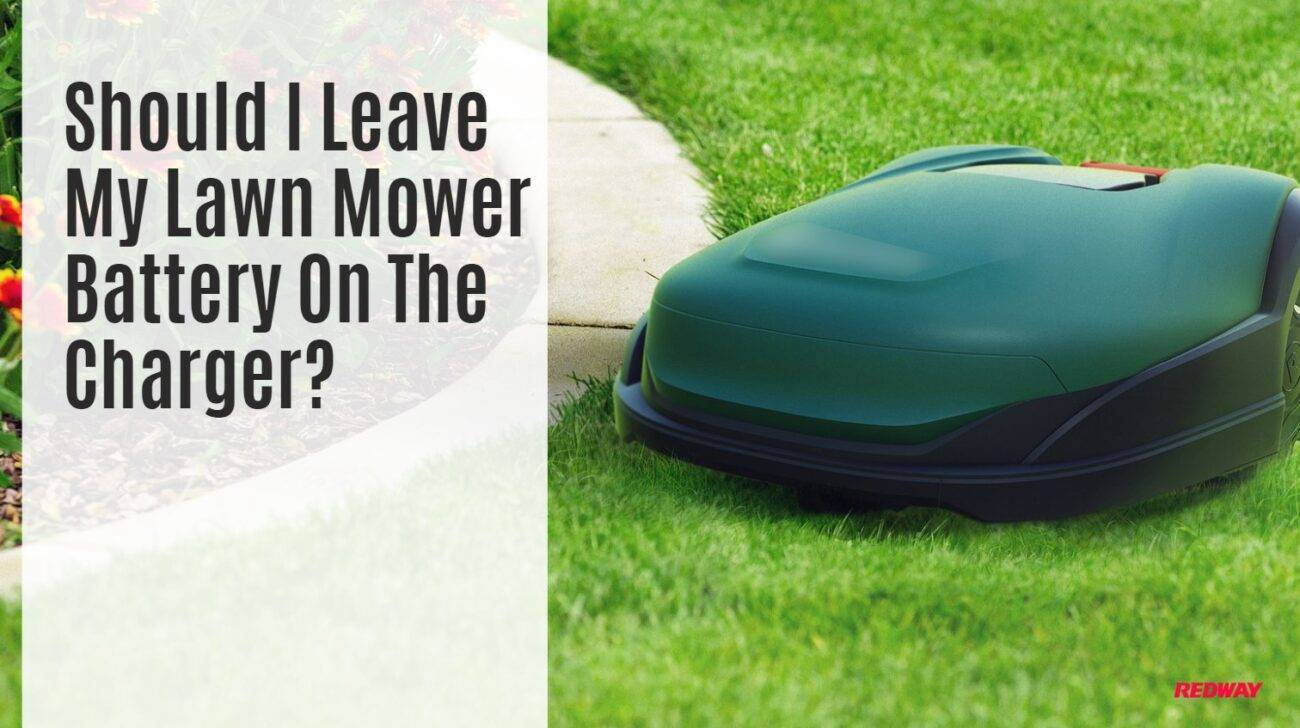
Blog
How Long Should You Leave a Trickle Charger on a Lawn Mower Battery?

You can safely leave a smart trickle charger connected to a lawn mower battery indefinitely, as it automatically switches to float mode to maintain the battery without overcharging. For manual trickle chargers, charging times typically range from 6 to 12 hours depending on the charger’s amperage and battery condition, requiring monitoring to prevent damage from overcharging.
What Is the Difference Between Smart and Manual Trickle Chargers for Lawn Mower Batteries?
Smart trickle chargers feature microprocessors that monitor battery voltage and automatically reduce current to a maintenance (float) level once the battery is fully charged, allowing for indefinite connection without harm. Manual chargers lack this feature, delivering a constant current that can overcharge if left too long; thus, they require disconnection after around 6–12 hours to avoid battery damage.
How Does Battery Condition Affect the Duration You Should Use a Trickle Charger?
Charging duration varies by battery state:
- For a fully charged battery in storage, a smart charger can maintain charge indefinitely.
- A partially discharged battery typically needs about 8–12 hours at a low amperage (e.g., 1 amp) to top off.
- Deeply discharged batteries may require 12–24 hours of trickle charging but need close monitoring especially if using a manual charger.
Temperature and battery chemistry can influence these ranges, with colder conditions often requiring longer charge times.
What Are the Risks of Leaving a Trickle Charger Connected Too Long?
Leaving a manual trickle charger connected beyond recommended times can cause overcharging, leading to electrolyte loss, swelling or cracking of the battery case, and sulfation, which permanently reduces battery capacity. Poor-quality chargers without safety cutoffs can pose fire hazards. Using quality, certified smart chargers mitigates these risks by managing charge rates precisely.
How Can You Optimize Trickle Charging for Lawn Mower Battery Maintenance?
Best practices include:
- Using a smart charger to enable safe, long-term charging and maintenance.
- Charging in a dry, well-ventilated area to dissipate any hydrogen gas produced.
- For manual chargers, timing charging sessions carefully (6–12 hours) and disconnecting promptly.
- Periodically checking battery voltage and physical condition, especially during off-season storage.
How Does Redway Power Support Safe and Effective Charging for Lawn Mower Batteries?
Redway Power offers lithium battery packs equipped with integrated Battery Management Systems (BMS) that optimize charging cycles, prevent overcharging, and monitor battery health in real time. Their advanced batteries allow safe overnight or long-term connection to chargers, reducing maintenance concerns and extending total battery life compared to conventional lead-acid types.
What Are the Signs That Your Lawn Mower Battery Needs Trickle Charging?
Indicators include slow engine cranking, battery voltage dropping below 12.4 volts, and extended periods of inactivity (over 30 days). Trickle charging is beneficial in these situations to restore or maintain charge without risk of damage when done with appropriate chargers and timing.
How Should You Store Lawn Mower Batteries During Off-Season?
Fully charge the battery before storage with a compatible charger, preferably smart or trickle chargers with float mode. Remove the battery from the mower, store in a cool, dry place, and periodically check or maintain charge every 30 days to prevent deep discharge. Clean terminals and inspect for corrosion to ensure optimal performance upon next use.
Chart: Recommended Trickle Charging Durations Based on Battery Condition
| Battery Condition | Charger Type | Recommended Charging Time | Notes |
|---|---|---|---|
| Fully Charged (Storage) | Smart Charger | Indefinite (Float Mode) | Safe for long-term connection |
| Partially Discharged | Manual/Smart | 8–12 hours | Monitor manual charger use |
| Deeply Discharged | Manual/Smart | 12–24 hours | Requires close monitoring |
Redway Power Expert Views
“Trickle charging is an essential maintenance practice for preserving lawn mower battery health, especially during off-seasons,” says a Redway Power battery expert. “We recommend smart chargers paired with our lithium-based batteries for optimal safety and efficiency, as the integrated BMS protects against overcharging and extends battery lifespan. Using advanced charging protocols and quality batteries like those from Redway Power equips users to maintain peak performance year-round.”
Conclusion
The appropriate duration for leaving a trickle charger on a lawn mower battery depends on the charger type and battery condition. Smart chargers enable indefinite connection by switching to maintenance mode, while manual chargers require timely disconnection after 6 to 12 hours to prevent damage. Following best practices in charging and storage, especially with advanced lithium batteries from Redway Power, maximizes battery life and mower reliability.
FAQs
Q: Can I leave a trickle charger plugged in all winter?
A: Yes, if it is a smart charger with float mode designed for long-term maintenance charging.
Q: How long should I leave a manual trickle charger on a lawn mower battery?
A: Typically 6 to 12 hours, depending on charger amperage and battery condition, with careful monitoring.
Q: What happens if I overcharge my lawn mower battery?
A: Overcharging can cause electrolyte loss, battery swelling, reduced capacity, and possible permanent damage.
Q: Does battery temperature affect charging time?
A: Yes, colder temperatures slow battery chemistry and may require extended charging duration.
Q: How does Redway Power enhance trickle charging safety and efficiency?
A: By producing lithium battery packs with built-in BMS that manage charging precisely and ensure long-term battery health.





